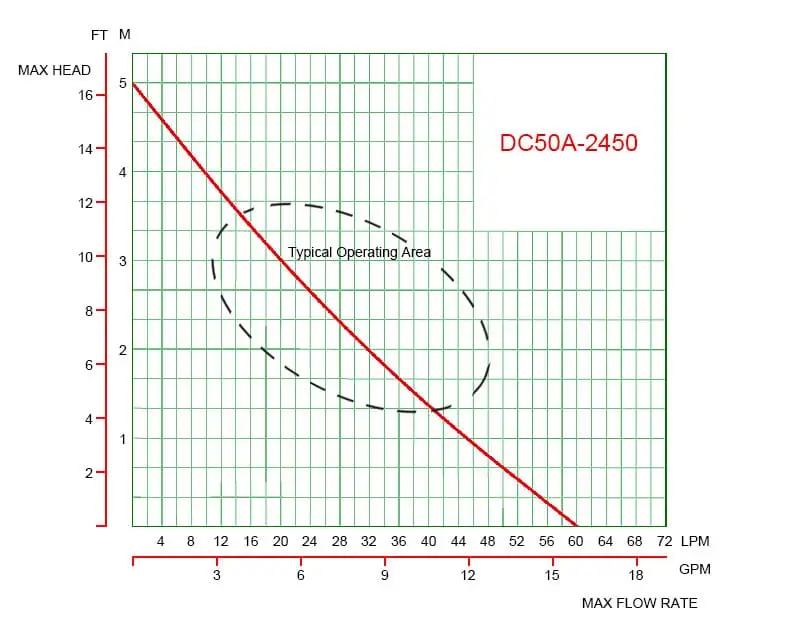Your first parameter consideration while choosing a water pump?
There are two important parameters marked on the label of pumps: Max Head and Max Flow Rate. They are essential factors you need to consider when you choose a pump. If I ask which one is your first consideration, most people might say ‘Max Flow Rate.’
The Flow Rate will determine the amount of time you need to move the required fluid. So it’s really important. But unfortunately, that is the wrong answer.
You should consider the Max Head at first
First, let’s figure out the concepts of Max Head and Max Flow rate.
Max Head refers to a pump’s capability to push water upwards (also known as ‘vertical lift’). What is often overlooked is that at its max head lift, the pump will deliver zero flow!
How about ‘Max Flow Rate’? Max Flow Rate means a pump’s capability to transfer fluid volume. It can achieve the max value only when the head lift is zero.
So why do I think the Max Head is more important than the Max Flow Rate? Because most of the time, we need to pump the fluid to a desired height. We won’t transfer water horizontally. We must first make sure that the pump can deliver the liquid to the required level.
Max Head affects the Actual Flow Rate to a great extent.
Now we know the marked Max Flow Rate is just an ideal value. In actual work, it is impossible to outreach the Max Flow Rate marked. It only represents the performance capacity of a pump. This means that the Actual Flow Rate is not equal to the Max Flow Rate. The actual flow rate is the data we should be concerned about.

When the pump works, its Actual Flow Rate is inversely proportional to the required height. When the pump delivers the fluid to a higher point, its Actual Flow Rate decreases. The Actual Flow Rate’s decay rate will increase sharply as the required height is close to the Max Head. You should generally let the pump run within its typical operating area to get the best performance (Refer to the Curves Graph above).
Now, let’s use an example to illustrate Max Head’s impact on the Actual Flow Rate. To give you an idea, take our two models to demonstrate the problem: DC50A-2450 and DC50E-24150. Click the link in the text to enter the details page of the model.
The Sub-Model List table clearly indicates that they have the same rated voltage and rated current, which means that they have the same rated power. Now let’s take a look at their differences.
| Max Head | Max Flow Rate | |
| DC50A-2450 | 5 meters | 1560 liters per hour |
| DC50E-24150 | 15 meters | 3600 liters per hour |
As can be seen from the performance curves of the two models:
When the required height equals 3 meters, the Actual Flow Rate of both models is 20 liters per minute.
When the required height is more than 3 meters, the Actual Flow Rate of DC50E-24150 is greater. When the needed height is less than 3 meters, the Actual Flow Rate of DC50A-2450 is greater.
So, if you want to pump water to the vertical height of 4 meters or even higher, of course, DC50E-24150 is a better choice.
Summary
When we choose a pump, we shouldn’t just focus on the marked Max Flow Rate. We should consider the Max Head at first. Because the Actual Flow Rate is not equal to the Max Flow Rate. The Max Head determines whether the pump can reach your desired height. It also determines the pump’s Actual Flow Rate at work.